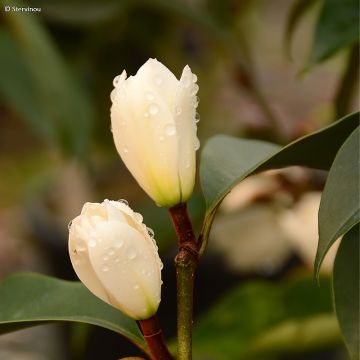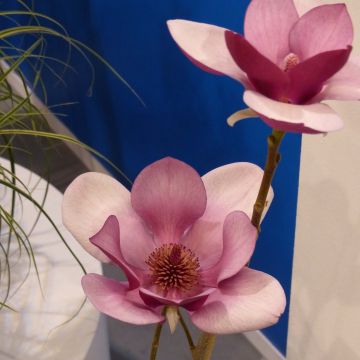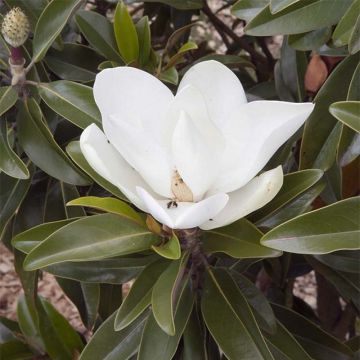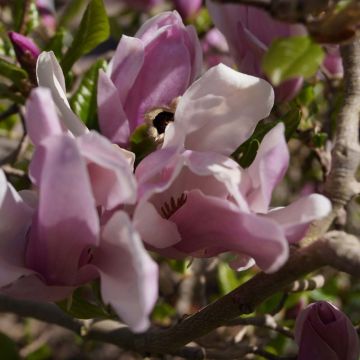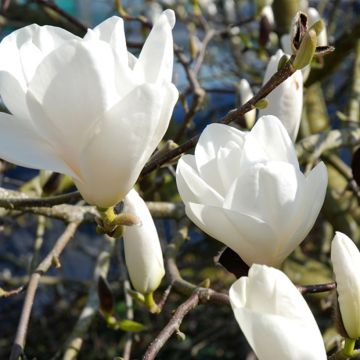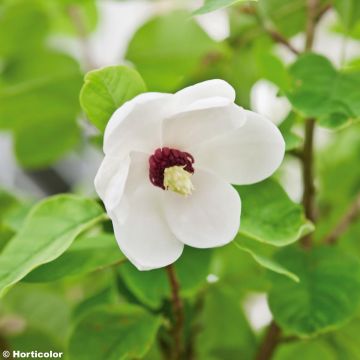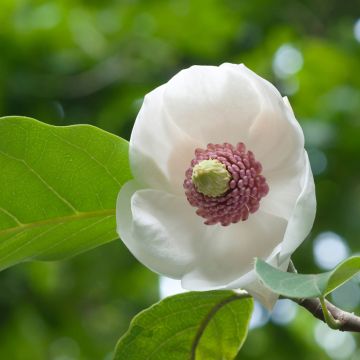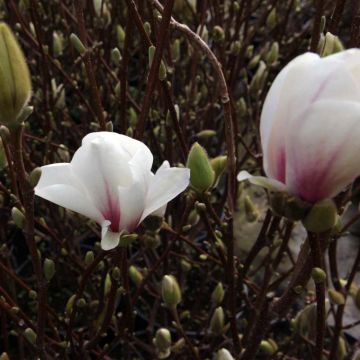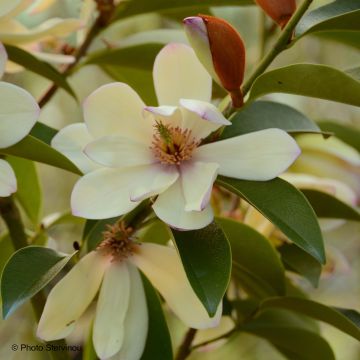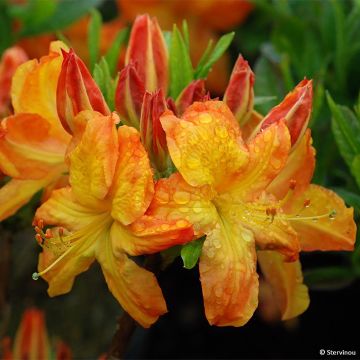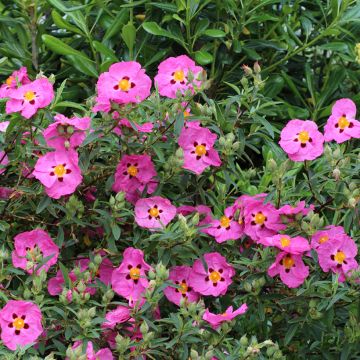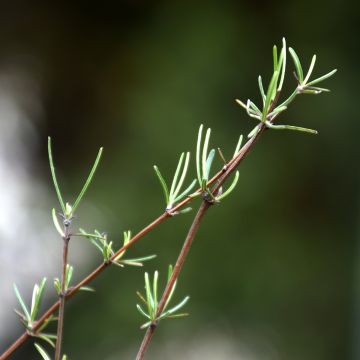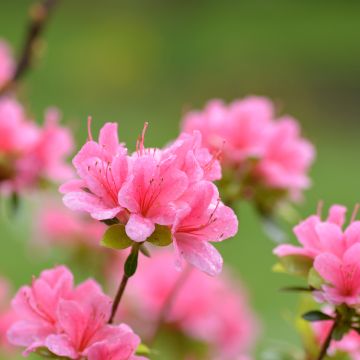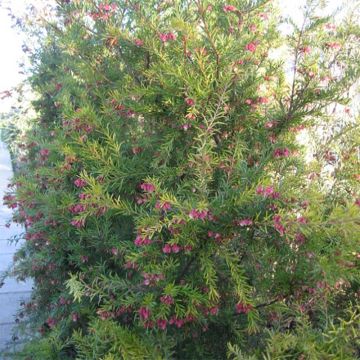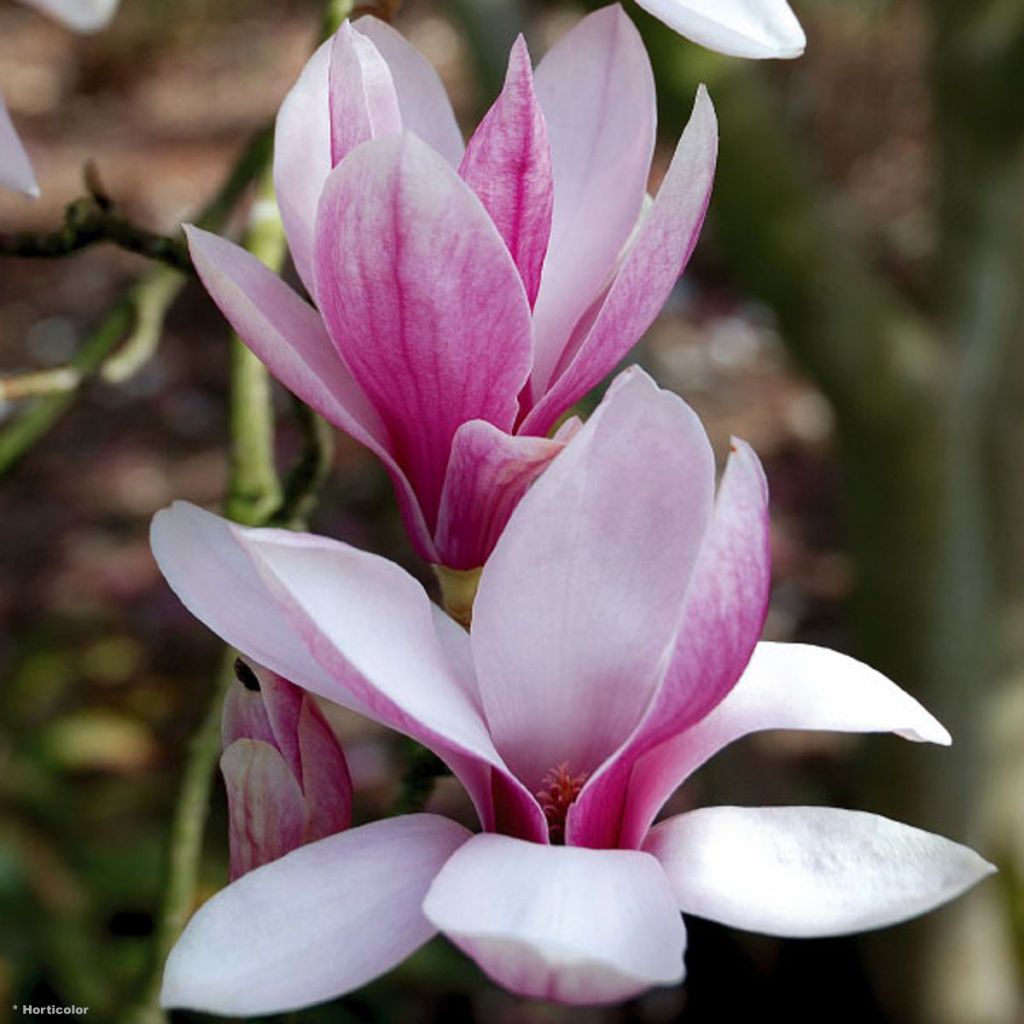

Magnolia x soulangeana
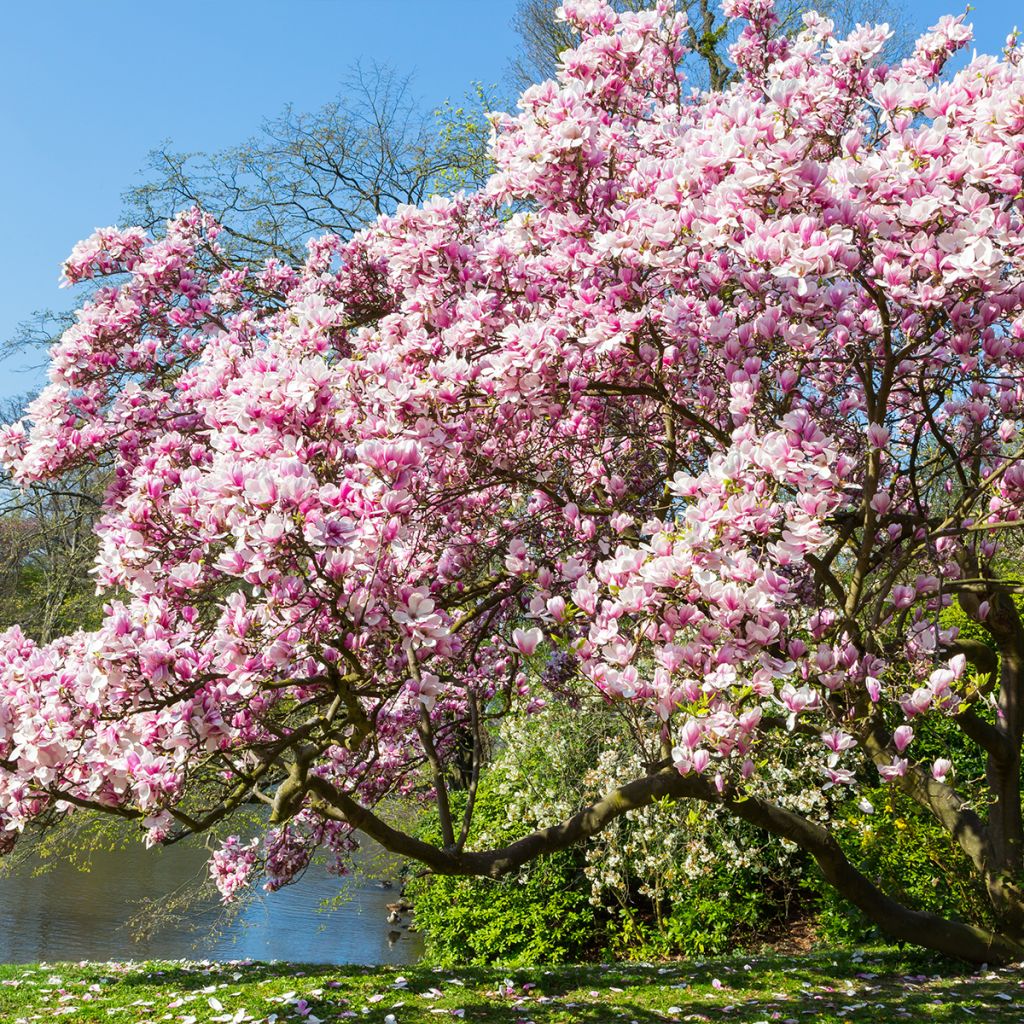

Magnolia x soulangeana
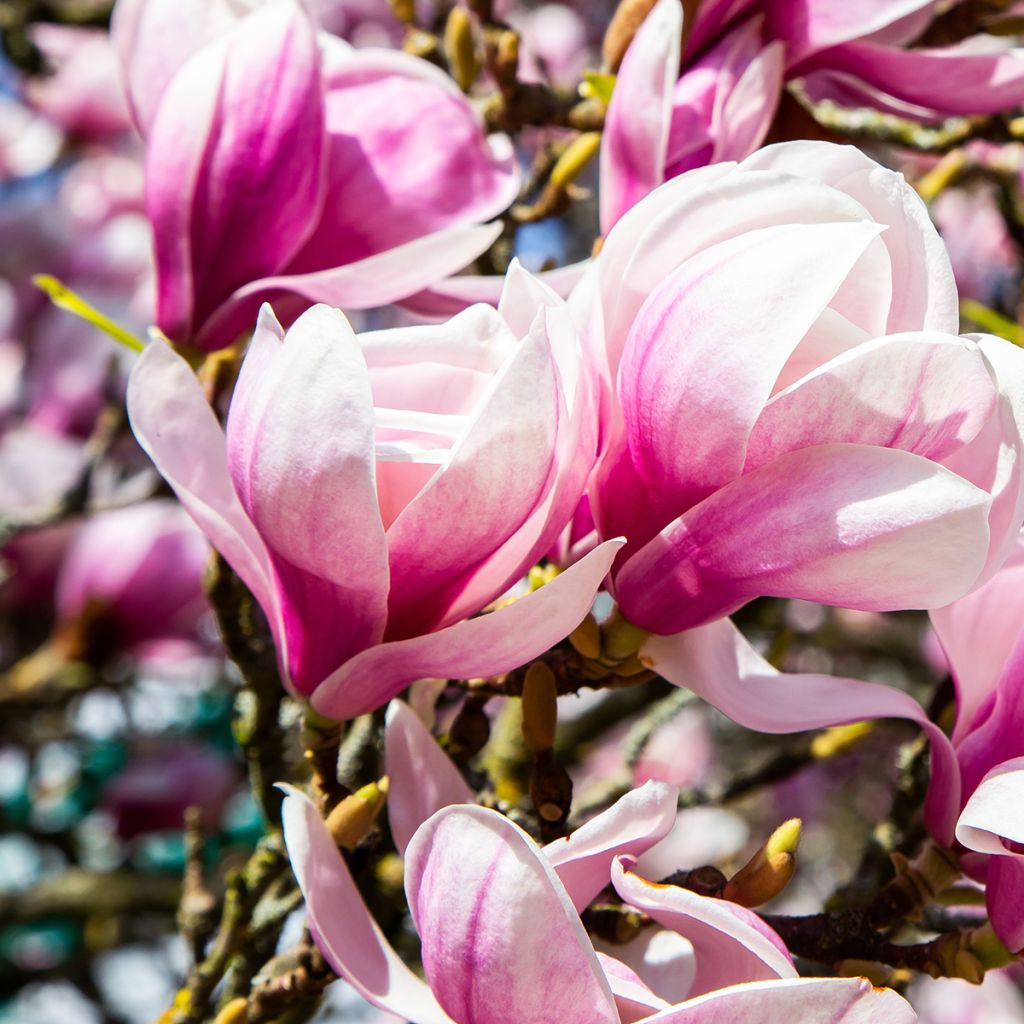

Magnolia x soulangeana
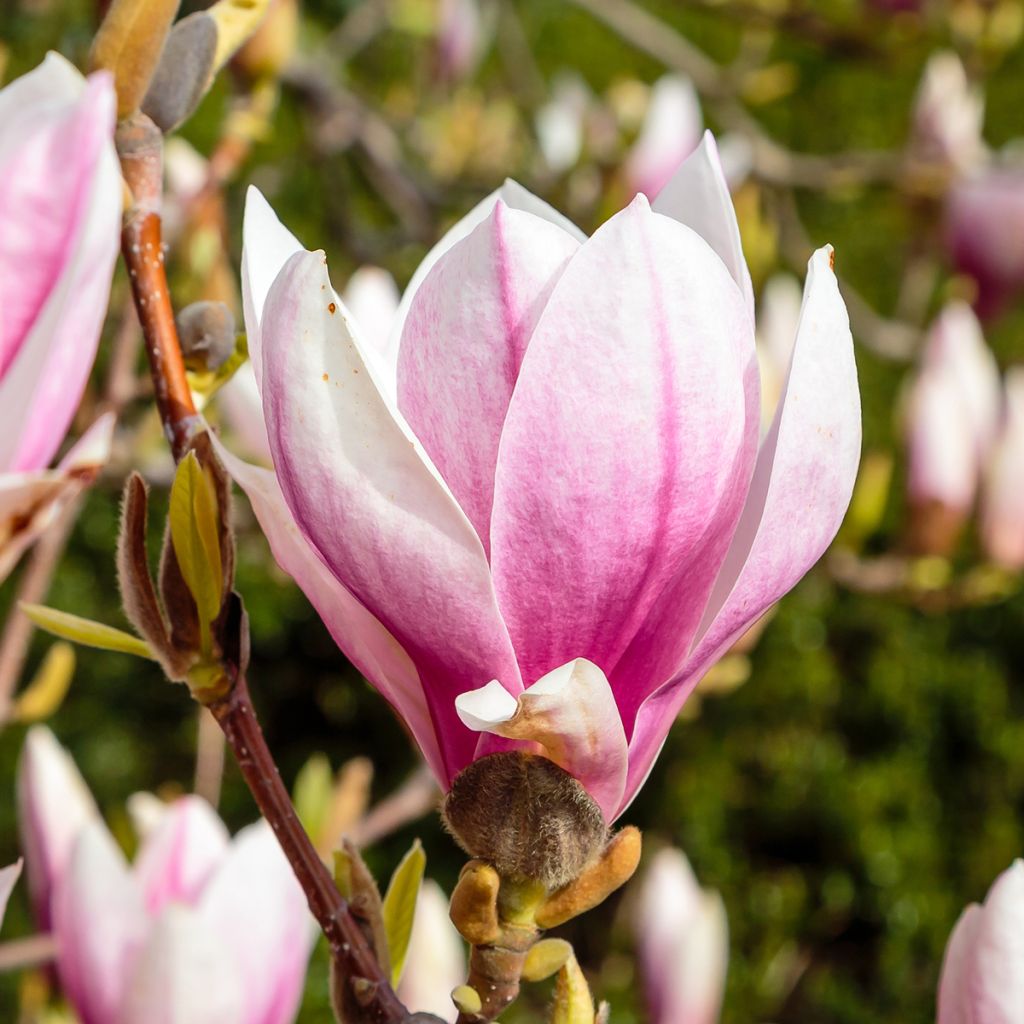

Magnolia x soulangeana
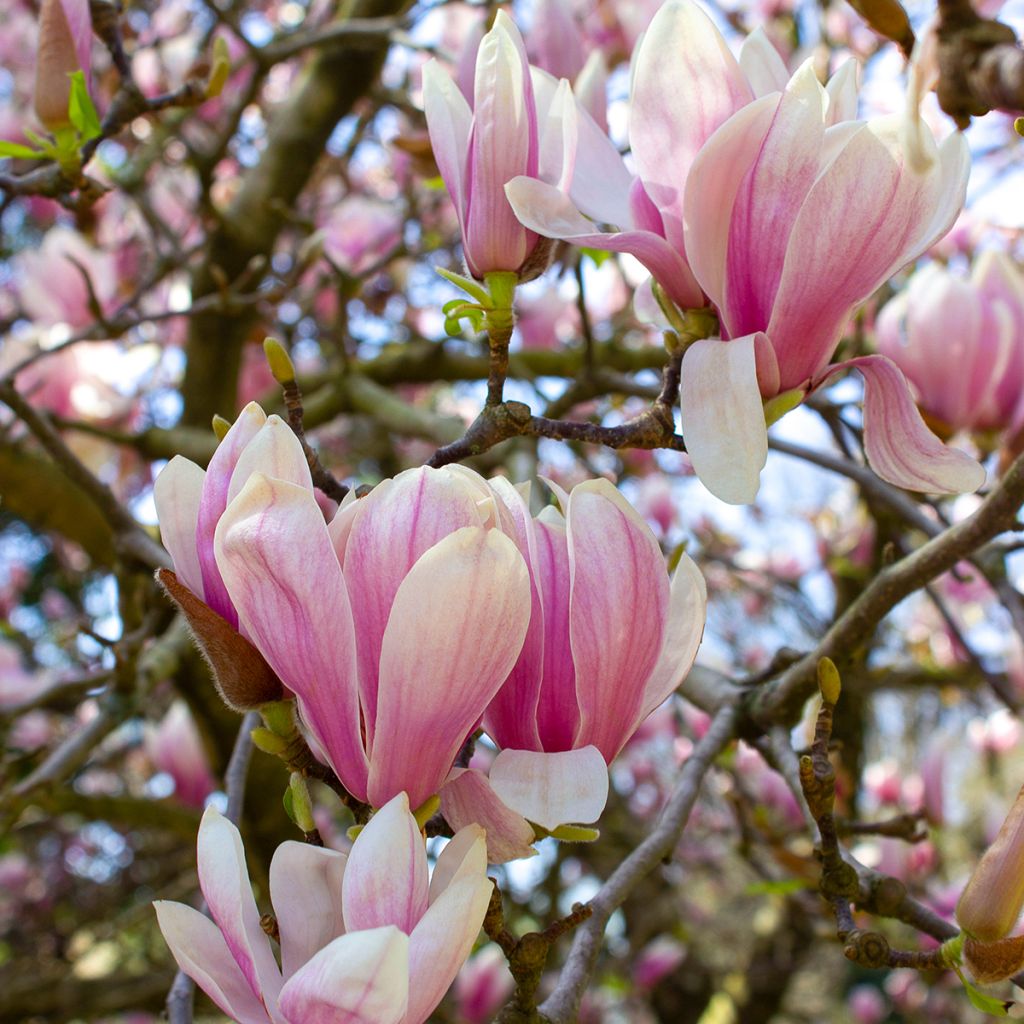

Magnolia x soulangeana
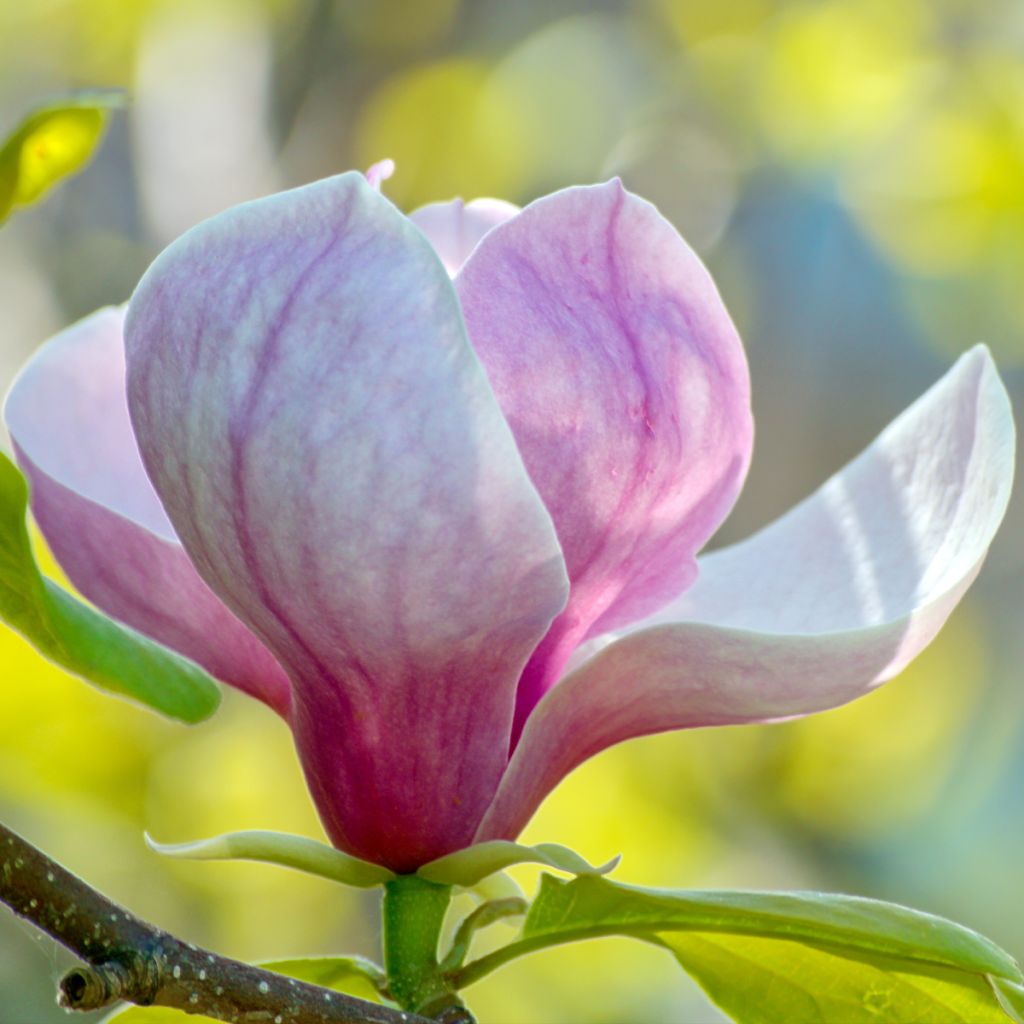

Magnolia x soulangeana
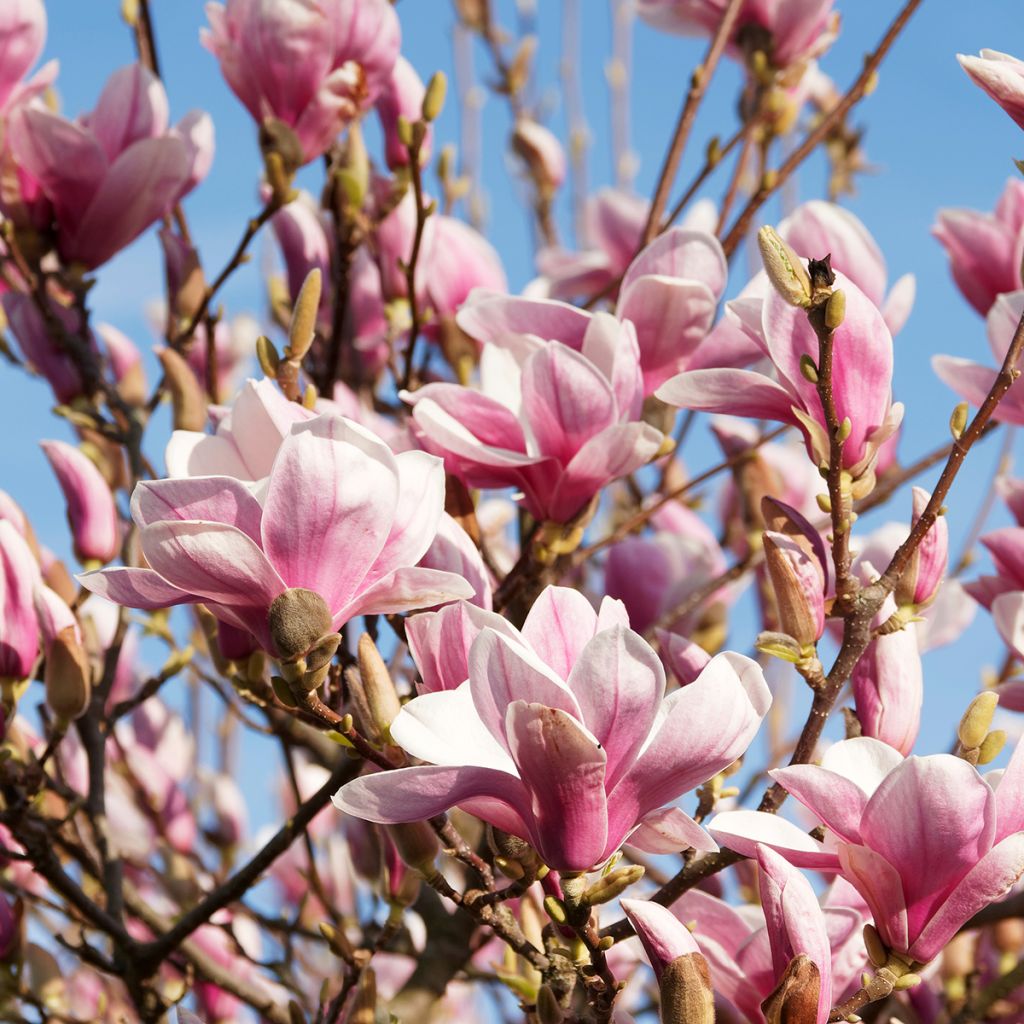

Magnolia x soulangeana
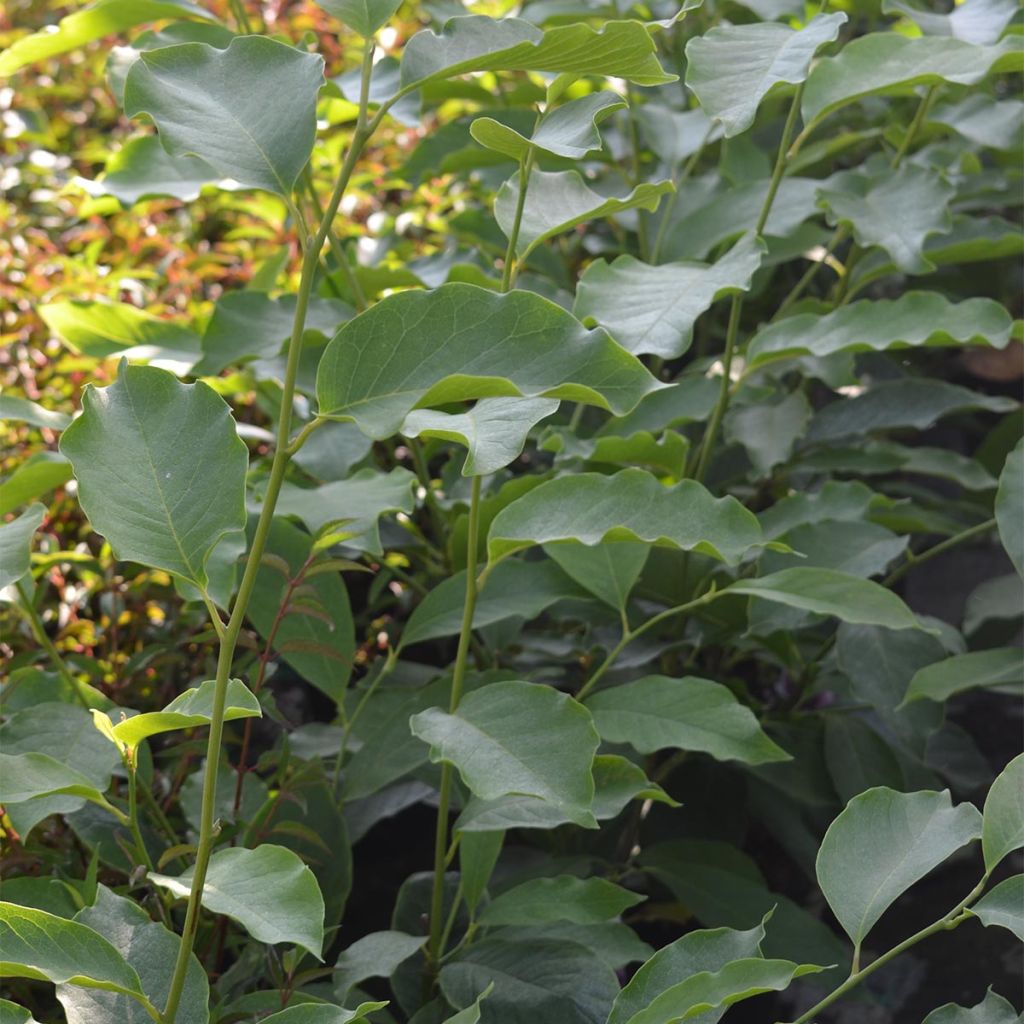

Magnolia x soulangeana
Magnolia x soulangeana
Magnolia x soulangeana
Magnolia
Pleasantly surprised by its size upon arrival. It has taken well. I had to treat it this summer as it was attacked by parasites, red spiders according to the nurseryman. But it has recovered well. No flowers for now. To be continued.
Anne , 06/10/2025
Special offer!
Receive a €20 voucher for any order over €90 (excluding delivery costs, credit notes, and plastic-free options)!
1- Add your favorite plants to your cart.
2- Once you have reached €90, confirm your order (you can even choose the delivery date!).
3- As soon as your order is shipped, you will receive an email containing your voucher code, valid for 3 months (90 days).
Your voucher is unique and can only be used once, for any order with a minimum value of €20, excluding delivery costs.
Can be combined with other current offers, non-divisible and non-refundable.
Home or relay delivery (depending on size and destination)
Schedule delivery date,
and select date in basket
This plant carries a 24 months recovery warranty
More information
We guarantee the quality of our plants for a full growing cycle, and will replace at our expense any plant that fails to recover under normal climatic and planting conditions.
Would this plant suit my garden?
Set up your Plantfit profile →
Description
One of the oldest flowering trees, the Magnolia x soulangeana is a fascinating deciduous foliage bush of medium size with a spreading habit, well branched, slow growing, and extremely floriferous. It is covered in early spring, before the leaves appear, with large flowers that are slightly fragrant and cream-white, pink, and purple in colour, shaped like tulips. A sumptuous spectacle in pastel colours that brings the garden back to life after winter!
This Magnolia, belonging to the magnolia family and originating from Asia, is a French horticultural creation from the 19th century, resulting from the crossbreeding of Magnolia denudata and Magnolia liliflora. It is an upright tree with a rounded and spreading shape, taller than wide, reaching a height of 6 to 8 metres at maturity and a width of 4.50 metres. It often has a bushy habit with beautiful, well-balanced branches, but it can also grow with a single trunk. The base of its leaves is contracted, and their rounded tip is briefly tapering. The deciduous foliage consists of oval, dark green leaves with a paler and finely velvety underside, turning yellow-brown in autumn, and measuring 10 to 15 cm (3.9 to 5.9 in) long. From March to May, large campanulate flowers appear, before and after the leaves, solitary and fragrant, shaped like cups or tulips, white on the inside and dark pink-purple on the outside. These upright flowers open from buds protected by velvety bracts and are made up of 9 waxy and thick tepals (indistinguishable sepals and petals), opening widely and measuring up to 15 cm (5.9 in) long, with numerous red-brown stamens. After flowering, brown fruits in the shape of cylindrical cones appear, containing red seeds. The longevity of the Magnolia x soulangeana can exceed a hundred years. It is one of the most widely planted Magnolia in parks and gardens across Europe.
This Magnolia x soulangeana, an exceptional ornamental tree, will thrive in both small gardens and large parks! It is perfectly suited to our climates and should be planted in a rich, moist, and well-drained soil that is not chalky, in full sun or partial shade. Also, avoid planting other plants within 1.50 metres (4 feet 11 inches) of the Magnolia trunk, as its roots do not tolerate competition. It is most commonly used as a solitary specimen in the middle of a short grass meadow, where its remarkable flowering is truly impressive. It can also be combined with a mass planting of acid-loving shrubs (Rhododendrons, Camellias, Hydrangeas, Nandinas, Peonies...) for a Japanese-style garden. It is also possible to create beautiful flowering hedges along pathways, alternating this Magnolia with other cultivars (Magnolia grandiflora, Magnolia denudata...).
Magnolias are ancient trees, with fossils dating back more than 20 million years. Their magnificent flowering is considered one of the most primitive: their flowers are, from an evolutionary point of view, close to the earliest existing flowers. The bark of magnolias has medicinal properties and is used in cosmetics. Their wood is considered precious.
Report an error about the product description
Magnolia x soulangeana in pictures


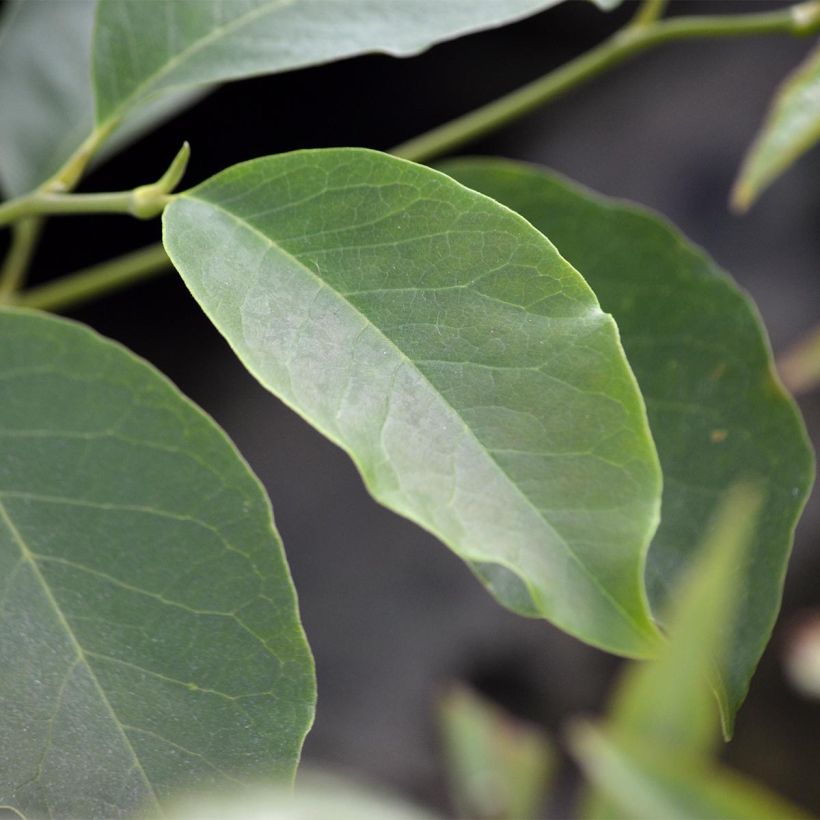



Plant habit
Flowering
Foliage
Botanical data
Magnolia
x soulangeana
Magnoliaceae
Magnolia
Cultivar or hybrid
Other Magnolia
View all →Planting and care
The Magnolia x soulangeana thrives in sheltered locations with plenty of sun or partial shade. It requires moist to humid, well-drained, deep, neutral to acidic soil that is rich in humus. It can tolerate clayey soil as long as it is not waterlogged and can also handle some limestone in the soil, but not too much. However, it cannot survive in poor, dry soil or windy locations. The tree is highly hardy and can withstand temperatures as low as -20°C, but young plants need protection from frost in their first years. Late frosts and cold winds can damage the tree's flower buds and young leaves, affecting its ability to bloom.
You can plant Magnolia in spring or autumn, as long as there is no frost. Choose a sheltered spot away from cold winds and prepare a hole that is 80 cm (31.5 in) on each side and the same depth. Fill the hole with ericaceous soil, compost, and carefully place the tree in it to avoid breaking its fragile roots. Water the tree immediately with non-limestone water (rainwater) to help compact the soil around the roots. In the first year after planting, water the tree once a week. Add a layer of mulch or fertiliser in the spring.
Replacing the soil with grass cuttings, pine bark, leaf compost, and ericaceous soil is advisable if planting in limestone soil. Avoid choosing too large plants (1.50 m (4 ft 11 in) is a good size) for a better tree establishment. Staking may be necessary for larger trees and should be generously watered in the first few years. Magnolia cannot tolerate prolonged drought, so the soil should remain slightly moist (but not waterlogged) throughout the summer. Mulching the base of the tree will help retain moisture during the hot season, enrich the soil, and protect it from the cold in winter.
For the first few years, pruning after flowering can be done to shape the tree's silhouette. The growth of this tree is slow in the first years after planting, but it will be well-established after 4 to 5 years, and its growth rate will increase. Pruning will become unnecessary except for removing dead wood and rebalancing its habit. Transplanting should be avoided due to the tree's fragile roots. Because Magnolia's roots are delicate, it's best to avoid transplanting. Magnolias are ornamental trees that do well in polluted areas, and their roots won't damage building foundations. Parasites like scale insects, snails, and slugs can harm young plants and diseases like rot (in excessively wet soil), coral spot, and pestalotiopsis.
Planting period
Intended location
Care
-
, onOrder confirmed
Reply from on Promesse de fleurs
Similar products
Haven't found what you were looking for?
Hardiness is the lowest winter temperature a plant can endure without suffering serious damage or even dying. However, hardiness is affected by location (a sheltered area, such as a patio), protection (winter cover) and soil type (hardiness is improved by well-drained soil).

Photo Sharing Terms & Conditions
In order to encourage gardeners to interact and share their experiences, Promesse de fleurs offers various media enabling content to be uploaded onto its Site - in particular via the ‘Photo sharing’ module.
The User agrees to refrain from:
- Posting any content that is illegal, prejudicial, insulting, racist, inciteful to hatred, revisionist, contrary to public decency, that infringes on privacy or on the privacy rights of third parties, in particular the publicity rights of persons and goods, intellectual property rights, or the right to privacy.
- Submitting content on behalf of a third party;
- Impersonate the identity of a third party and/or publish any personal information about a third party;
In general, the User undertakes to refrain from any unethical behaviour.
All Content (in particular text, comments, files, images, photos, videos, creative works, etc.), which may be subject to property or intellectual property rights, image or other private rights, shall remain the property of the User, subject to the limited rights granted by the terms of the licence granted by Promesse de fleurs as stated below. Users are at liberty to publish or not to publish such Content on the Site, notably via the ‘Photo Sharing’ facility, and accept that this Content shall be made public and freely accessible, notably on the Internet.
Users further acknowledge, undertake to have ,and guarantee that they hold all necessary rights and permissions to publish such material on the Site, in particular with regard to the legislation in force pertaining to any privacy, property, intellectual property, image, or contractual rights, or rights of any other nature. By publishing such Content on the Site, Users acknowledge accepting full liability as publishers of the Content within the meaning of the law, and grant Promesse de fleurs, free of charge, an inclusive, worldwide licence for the said Content for the entire duration of its publication, including all reproduction, representation, up/downloading, displaying, performing, transmission, and storage rights.
Users also grant permission for their name to be linked to the Content and accept that this link may not always be made available.
By engaging in posting material, Users consent to their Content becoming automatically accessible on the Internet, in particular on other sites and/or blogs and/or web pages of the Promesse de fleurs site, including in particular social pages and the Promesse de fleurs catalogue.
Users may secure the removal of entrusted content free of charge by issuing a simple request via our contact form.
The flowering period indicated on our website applies to countries and regions located in USDA zone 8 (France, the United Kingdom, Ireland, the Netherlands, etc.)
It will vary according to where you live:
- In zones 9 to 10 (Italy, Spain, Greece, etc.), flowering will occur about 2 to 4 weeks earlier.
- In zones 6 to 7 (Germany, Poland, Slovenia, and lower mountainous regions), flowering will be delayed by 2 to 3 weeks.
- In zone 5 (Central Europe, Scandinavia), blooming will be delayed by 3 to 5 weeks.
In temperate climates, pruning of spring-flowering shrubs (forsythia, spireas, etc.) should be done just after flowering.
Pruning of summer-flowering shrubs (Indian Lilac, Perovskia, etc.) can be done in winter or spring.
In cold regions as well as with frost-sensitive plants, avoid pruning too early when severe frosts may still occur.
The planting period indicated on our website applies to countries and regions located in USDA zone 8 (France, United Kingdom, Ireland, Netherlands).
It will vary according to where you live:
- In Mediterranean zones (Marseille, Madrid, Milan, etc.), autumn and winter are the best planting periods.
- In continental zones (Strasbourg, Munich, Vienna, etc.), delay planting by 2 to 3 weeks in spring and bring it forward by 2 to 4 weeks in autumn.
- In mountainous regions (the Alps, Pyrenees, Carpathians, etc.), it is best to plant in late spring (May-June) or late summer (August-September).
The harvesting period indicated on our website applies to countries and regions in USDA zone 8 (France, England, Ireland, the Netherlands).
In colder areas (Scandinavia, Poland, Austria...) fruit and vegetable harvests are likely to be delayed by 3-4 weeks.
In warmer areas (Italy, Spain, Greece, etc.), harvesting will probably take place earlier, depending on weather conditions.
The sowing periods indicated on our website apply to countries and regions within USDA Zone 8 (France, UK, Ireland, Netherlands).
In colder areas (Scandinavia, Poland, Austria...), delay any outdoor sowing by 3-4 weeks, or sow under glass.
In warmer climes (Italy, Spain, Greece, etc.), bring outdoor sowing forward by a few weeks.






























